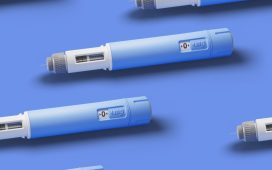44 percent of high school seniors who misuse prescription drugs have multiple drug sources
MONDAY, Aug. 12, 2019 (HealthDay News) — Misuse of prescription drugs is common among high school students, and those misusing prescription drugs frequently obtain them from multiple sources, according to two studies published in the July issue of the Journal of the American Academy of Child and Adolescent Psychiatry.
Ty S. Schepis, Ph.D., from Texas State University in San Marcos, used data from the 2009 to 2014 National Survey on Drug Use and Health (including 103,920 adolescents aged 12 to 17 years) to assess six sources of prescription drug misuse. The researchers found that friends/relatives were the most common source (29 to 33.2 percent), followed by physician sources for opioids (23.9 percent), purchases for stimulants (23.5 percent), and tranquilizer/sedatives (22.7 percent). Female adolescents were more likely to use multiple sources and >70 percent of adolescents using multiple sources had a past-year substance use disorder.
In a second study, Sean Esteban McCabe, Ph.D., from the University of Michigan in Ann Arbor, and colleagues analyzed data from a national sample of 18,549 high school seniors participating in the Monitoring the Future study. The researchers found that 11 percent of high school seniors reported past-year nonmedical use of prescription drugs, and a substantial proportion of them obtained the prescription drugs from multiple sources (44.2 percent). Adolescent boys were more likely to obtain prescription drugs from friend/purchased sources, while adolescent girls were more likely to use their own leftover prescriptions. Substance use was more likely among nonmedical users who obtained prescription drugs from multiple sources, while adolescent nonmedical users who used their own leftover prescriptions were less involved in substance use.
“The implications from these two studies could not be clearer,” McCabe said in a statement. “Parents, public health experts, and clinicians must rally to address this problem. There is a critical need for clinical workforce training to support clinic and school-based education, screening, prevention, and early intervention.”
Abstract/Full Text 1 (subscription or payment may be required)
Abstract/Full Text 2 (subscription or payment may be required)
Copyright © 2019 HealthDay. All rights reserved.








